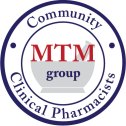“The pharmacist of tomorrow is going to be unrecognizable to most of us. He might not be a vending machine, but he’s not going to be that quiet old white-haired guy up behind the counter, either.” – Jim Ammen
Part of the team…
Harnessing the power of a pharmacist’s knowledge and expertise to control healthcare costs and improve patient outcomes has been a difficult process. Those promoting the transformation of the role of the pharmacist from the traditional dispenser of medications to a dispenser of information have always been confronted with the question of “who will pay for these services”. Fortunately, since the implementation of Medicare-D, the value of pharmacists providing cognitive services, including medication therapy management MTM services, has become more widely recognized.
But even with this increased recognition, the profession of pharmacy is still facing a sort of ‘identity crisis’. “Pharmacists see themselves as having nine different identities” according to a recent @ChemistDruggist article, thus suggesting they play a ‘flexible role’ in healthcare but remain uncertain of the future.
It’s been a long time coming…
The decade long push for recognizing pharmacists as healthcare providers is finally seeing results. Recent legislation in California became law when Governor Jerry Brown signed the pharmacist provider status bill (SB 493) recognizing pharmacists as healthcare providers. I’m sure other states will be looking at similar legislation in the near future. But will the new legal recognition as providers get pharmacists a seat at the healthcare team table?
“Pharmacists are working more closely with patients and healthcare colleagues in hospitals, outreach teams, patients’ homes, residential care,  hospices, and general practice” reports the Royal Pharmaceutical Society @rpharms in ‘Now or Never: Shaping Pharmacy for the Future’. In the U.S. the team based care approach continues to get a foothold with pharmacists participating in patient centered medical home models, accountable care organizations and in collaborative arrangements with other healthcare providers. But we have a long road ahead until we’ll actually see a majority of pharmacists participating as a member of the healthcare team on this level.
hospices, and general practice” reports the Royal Pharmaceutical Society @rpharms in ‘Now or Never: Shaping Pharmacy for the Future’. In the U.S. the team based care approach continues to get a foothold with pharmacists participating in patient centered medical home models, accountable care organizations and in collaborative arrangements with other healthcare providers. But we have a long road ahead until we’ll actually see a majority of pharmacists participating as a member of the healthcare team on this level.
It all makes sense…
There are areas where it’s been shown pharmacists can contribute as a first string member of the healthcare plan team. Take medication non-adherence for example. The cost of non-adherence and compliance to prescribed medication therapy has been reported to be well over $290 billion annually in the United States. This is often a direct reflection of the lack of a patient’s understanding of their particular disease state and how their medication therapy can control or improve their particular condition. This is a great example where having a pharmacist on the care plan team makes a great deal of sense, especially at any point of transitional care.
A major component of the patient care plan consists of properly treating the patient’s disease state with appropriate drug therapy. When there is a breakdown, pause or discontinuation of medication therapy by a patient, i.e. lack of medication adherence or compliance, one can almost always predict a breakdown in overall patient care. This can result in increased hospital re-admissions, lack of disease control, increased complications and of course, increased healthcare costs.
Including a pharmacist in the patient care plan process can improve patient outcomes, especially during transitional care. About 1 in 5 Medicare patients who leave the hospital are readmitted withing 30 days. “We know that people who have medication discrepancies, or are not adhering to what the health care team thought they were adhering to, have at least double the risk of becoming a readmission” reports Jane Brock, MD, of the Colorado Foundation for Medical Care.
Pharmacists should be given the role of patient care managers and should be performing services such as medication reconciliation, checking for potential adverse drug reactions, performing patient education and other patient oriented services such such as MTM whenever there is a transition in medical care. They should also be directly involved with follow-up services to ensure adherence and compliance to drug therapy and report this back to the patient care plan team. Compliance to drug therapy is critical in chronic diseases such as diabetes, hypertension or heart disease and community pharmacists are in an ideal position to fulfill this role.
medical care. They should also be directly involved with follow-up services to ensure adherence and compliance to drug therapy and report this back to the patient care plan team. Compliance to drug therapy is critical in chronic diseases such as diabetes, hypertension or heart disease and community pharmacists are in an ideal position to fulfill this role.
Moving forward…
I’ve written before on the topic of pharmacists “being the healthcare provider”. As PROVIDERS of services (including MTM services) and EDUCATORS to help patients understand their medications and medical conditions, pharmacists will be recognized as a resource to ensure continuity through the transitions of healthcare, thus changing patient’s lives, improving outcomes and saving healthcare dollars.
So again I say “Be the Provider” and take an active roll as part of the patient care planning team.












